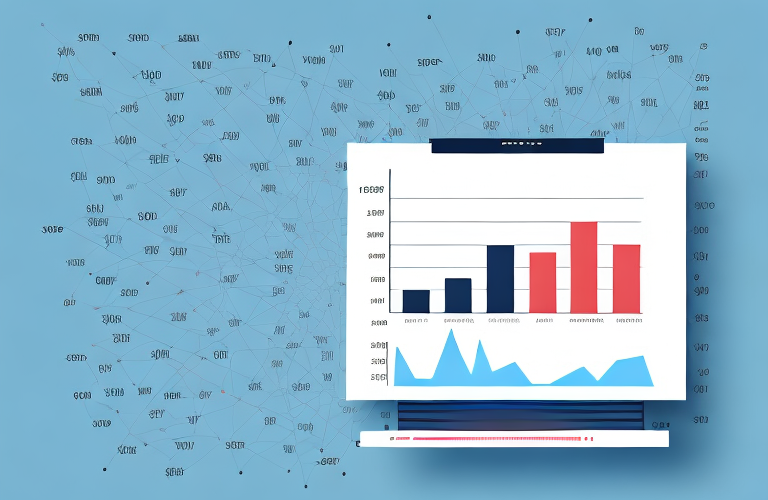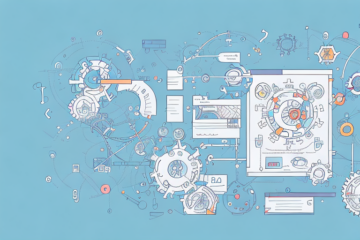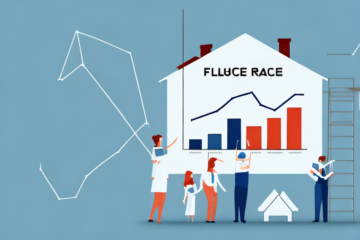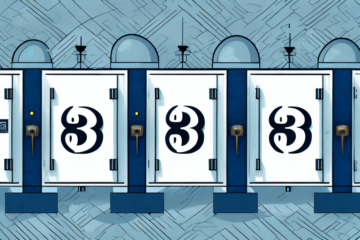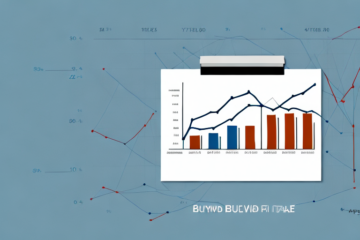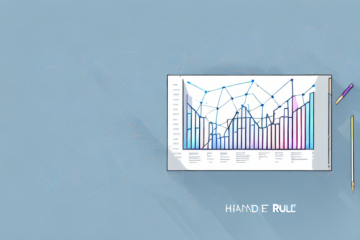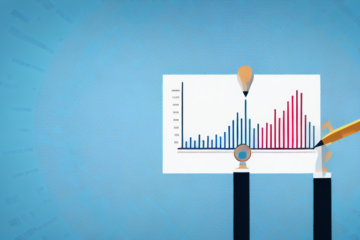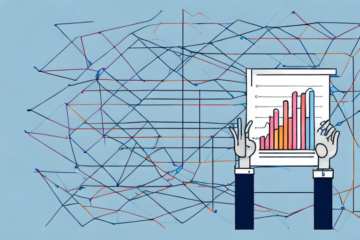What Is the 11th District Cost of Funds Index (COFI) in Finance Terms?
If you’re a banker, lender, or investor, chances are you’ve heard of the 11th District Cost of Funds Index (COFI). However, do you truly understand what this index is and how it affects the finance industry? In this comprehensive article, we will delve into the details and provide you with a complete understanding of the COFI.
Understanding the Basics of COFI: A Brief Introduction
The COFI is an index that measures the average interest expenses incurred by the financial institutions in the 11th Federal Home Loan Bank District, which includes Arizona, California, and Nevada. COFI is used to determine the interest rates of adjustable-rate mortgages (ARMs) and other financial products. This index is calculated monthly, and its most recent value is reported on the last day of every month.
COFI is considered to be a lagging indicator of the economy, as it reflects the interest rates that were prevalent in the previous month. This means that changes in the economy may not be immediately reflected in the COFI. However, it is still an important indicator for borrowers and lenders, as it helps them to make informed decisions about their financial products.
It is important to note that COFI is not the only index used to determine interest rates for ARMs. Other popular indices include the London Interbank Offered Rate (LIBOR) and the Constant Maturity Treasury (CMT) index. Borrowers should carefully consider the pros and cons of each index before choosing an ARM product.
How the 11th District COFI is Calculated and Reported
The Federal Home Loan Bank of San Francisco calculates the COFI by averaging the interest expenses of the banks, savings institutions, and credit unions that are members of the 11th Federal Home Loan Bank District. The interest expenses are calculated by dividing the total interest paid on funds liabilities by the total amount of funds liabilities. The COFI is reported as a percentage, rounded to three decimal points.
The COFI is an important benchmark used by many financial institutions to set interest rates on various loans, including adjustable-rate mortgages. It is also used by regulators to monitor the financial health of member institutions in the 11th Federal Home Loan Bank District.
The COFI is published on the last business day of each month and is available on the Federal Home Loan Bank of San Francisco’s website. The historical data of the COFI can be accessed on the website as well, allowing for comparisons and analysis over time.
The Importance of the 11th District COFI in the Finance Industry
The COFI is an essential index in the finance industry as it affects the interest rates of several financial products. The interest rates of ARMs, which are prevalent in the housing market, significantly depend on the COFI’s values. The COFI also plays a crucial role in determining the interest rates of student loans, business loans, and other financial products.
Moreover, the COFI is used as a benchmark for many financial institutions to determine the interest rates they offer to their customers. Banks and other lending institutions use the COFI as a reference point to set their interest rates, which means that any changes in the COFI can have a significant impact on the interest rates offered by these institutions.
Additionally, the COFI is closely monitored by economists and financial analysts as it provides valuable insights into the state of the economy. The COFI is calculated based on the interest rates of savings institutions in the 11th Federal Home Loan Bank District, which includes California, Nevada, and Arizona. As such, changes in the COFI can indicate changes in the economic conditions of these states, which can have broader implications for the national economy.
The Role of the COFI in Adjustable Rate Mortgages (ARMs)
ARMS, also known as variable-rate mortgages, have interest rates that fluctuate based on the COFI’s value. The interest rate of an ARM is usually calculated as a margin, typically 2-3%, which is added to the COFI. Therefore, if the COFI increases, so does the interest rate of the ARM. This, in turn, results in increased payments for borrowers. Conversely, if the COFI decreases, the interest rate of the ARM decreases, resulting in lower payments for borrowers.
It is important to note that the COFI is not the only index used to calculate the interest rate of an ARM. Other popular indices include the London Interbank Offered Rate (LIBOR) and the Constant Maturity Treasury (CMT) rate. Lenders may offer borrowers a choice of index to use for their ARM, depending on their individual financial situation and risk tolerance.
Additionally, borrowers should be aware of the potential risks associated with ARMs. While they may offer lower initial interest rates and payments, they can also be subject to significant increases in interest rates and payments over time. Borrowers should carefully consider their financial situation and ability to make higher payments before choosing an ARM over a fixed-rate mortgage.
Historical Trends and Analysis of the 11th District COFI
Over the years, the COFI has had its share of ups and downs. The index has experienced significant fluctuations and has hit both highs and lows. To analyze the historical trends of the COFI, one must look at its values over different periods and compare them to other indexes such as the LIBOR and the prime rate.
One interesting trend to note is that the COFI tends to be more stable than other indexes during times of economic uncertainty. This is because the COFI is based on the average cost of funds for savings institutions in the 11th Federal Home Loan Bank District, which includes California, Arizona, and Nevada. These states have a large number of savings institutions that focus on long-term, fixed-rate mortgages, which tend to be less affected by short-term economic fluctuations.
Comparison of COFI with Other Indexes Used in Finance
The COFI is just one of several indexes used in the finance industry. Other popular indexes include the London Interbank Offer Rate (LIBOR) and the prime rate. While there are some similarities between these indexes, the COFI is unique due to the way it is calculated, and the institutions it represents. Therefore, it’s crucial to understand the differences between these indexes when considering the interest rates of different financial products.
One key difference between the COFI and other indexes is the frequency of rate adjustments. The COFI is typically adjusted on a monthly basis, while LIBOR and the prime rate may be adjusted more frequently. This can impact the stability of interest rates for borrowers and lenders. Additionally, the COFI is primarily used by savings institutions, while LIBOR and the prime rate are used by a wider range of financial institutions. Understanding these differences can help individuals make informed decisions when choosing financial products.
How Changes in COFI Affect Borrowers, Lenders, and Investors
The COFI’s fluctuations can impact borrowers, lenders, and investors in several ways. As discussed above, a rise in the COFI results in higher interest rates for adjustable-rate mortgages, which can cause financial strain on borrowers. However, lenders can benefit from the increased interest rates. On the other hand, if the COFI decreases, investors might not get the returns they were hoping for, resulting in financial losses.
In addition to the impact on borrowers, lenders, and investors, changes in COFI can also affect the overall economy. If the COFI rises too quickly, it can lead to a decrease in consumer spending, as borrowers have less disposable income to spend on other goods and services. This can lead to a slowdown in economic growth.
Furthermore, changes in COFI can also affect the housing market. If interest rates rise too quickly, it can lead to a decrease in demand for homes, as borrowers are less likely to take out mortgages. This can lead to a decrease in home prices and a slowdown in the construction industry.
The Future Outlook for the 11th District COFI
The COFI’s future outlook is subject to several factors such as economic performance, the housing market, and inflation rates. Although predicting the COFI’s future trends is challenging, it’s essential to stay updated with the latest financial news and economic indicators to make informed decisions related to investing or borrowing.
One of the key factors that can impact the future outlook of the 11th District COFI is the Federal Reserve’s monetary policy. The Federal Reserve’s decisions on interest rates and money supply can have a significant impact on the COFI’s performance. For instance, if the Federal Reserve decides to increase interest rates, it can lead to a rise in borrowing costs, which can negatively affect the COFI’s performance.
Another factor that can influence the COFI’s future trends is the overall health of the banking industry. If there are any significant changes in the banking industry, such as mergers or acquisitions, it can impact the COFI’s performance. Additionally, any changes in regulations or policies related to the banking industry can also have an impact on the COFI’s future outlook.
Strategies for Managing Risks Associated with Fluctuating COFI Rates
As with any other financial product, managing risks associated with the COFI requires careful consideration and planning. Borrowers can opt for fixed-rate mortgages to avoid fluctuations in interest rates. Lenders and investors can diversify their portfolios to reduce the risk of losses due to fluctuations in the COFI.
Another strategy for managing risks associated with fluctuating COFI rates is to consider a hybrid mortgage. This type of mortgage combines the features of both fixed-rate and adjustable-rate mortgages. The interest rate is fixed for a certain period, typically 5 or 10 years, and then adjusts annually based on the COFI. This can provide borrowers with some stability while still allowing them to take advantage of potential decreases in the COFI.
It is also important to stay informed about the market and economic conditions that can impact the COFI. Borrowers, lenders, and investors should regularly monitor financial news and economic indicators to stay up-to-date on any potential changes in the COFI. This can help them make informed decisions about when to lock in a rate or adjust their portfolio to mitigate risks.
Tips for Choosing between ARM and Fixed-Rate Mortgages Based on COFI Trends
When choosing between ARM and fixed-rate mortgages, considering the COFI trends is essential. Borrowers can research the COFI’s historical trends and predict its future performance to decide whether an ARM or a fixed-rate mortgage is more suitable for their financial needs.
Conclusion:
In conclusion, the 11th District Cost of Funds Index (COFI) plays a crucial role in the finance industry and affects several financial products, particularly adjustable-rate mortgages. Understanding the basics of COFI, its calculation, historical trends, and its impact on borrowers, lenders, and investors is essential for making informed financial decisions. Keeping up with the latest financial news and economic indicators is crucial in predicting the COFI’s performance and managing risks associated with fluctuations in its rates.
Another factor to consider when choosing between ARM and fixed-rate mortgages is the borrower’s financial goals. If the borrower plans to stay in the home for a short period, an ARM may be a better option as it typically offers lower initial interest rates. However, if the borrower plans to stay in the home for a longer period, a fixed-rate mortgage may be more suitable as it provides stability and predictability in monthly payments.
It is also important to note that while COFI trends can be a useful tool in decision-making, they are not the only factor to consider. Borrowers should also consider their credit score, debt-to-income ratio, and overall financial situation when choosing between ARM and fixed-rate mortgages.

